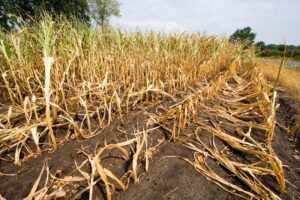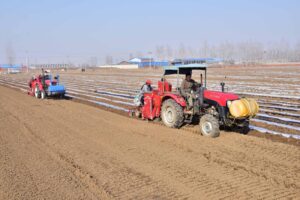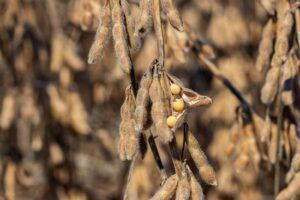UK potatoes, South Korean cabbage and west African cocoa are just some of the foods that became markedly more expensive after extreme weather events in recent years, according to new research.
The study, published in Environmental Research Letters, analyses 16 examples of food price rises across the world that followed periods of extreme heat, drought or rainfall over 2022-24.
A “striking” example, according to the lead author, is the wide-ranging price impact following a 2024 heatwave in Asia, which saw cost increases from onions in India to rice in Japan.
Soaring food prices have been a major concern for consumers around the world since around 2021, with prices rising due to extreme weather fuelled by climate change, higher production costs and Russia’s invasion of Ukraine – among other factors.
The new findings act as a “stark reminder” of the “significant pressure” climate change is already having on crops, a researcher not involved in the study says.
Effects of weather extremes
Extreme weather has both immediate and long-lasting impacts on food production. It can destroy growing crops, impact yields and even weaken food supply chains.
One impact frequently tied to climate change is the rising cost of food. The price of everything from olive oil to eggs, and from chocolate to rice has fluctuated in many parts of the world in recent years.
The new study analyses 16 examples of increased food prices after a period of extreme weather over 2022-24. The researchers then assess how unusual the extreme heat, drought and rainfall events were compared to historical climate data.
These case studies are outlined in the map below. The shading indicates the percentage by which each weather extreme exceeded past climate data from that time period.
Many events, indicated by the darkest shading, “were so extreme as to completely exceed all historical precedent prior to 2020”, the study says.

The analysis is based on temperature data from Copernicus ERA5 spanning 1940-2024 and the Standardized Precipitation Evapotranspiration Index spanning 1901-2023, along with reporting from a range of news outlets and food price data from governments and industry groups.
(ERA5 is a reanalysis dataset that combines climate observations with model simulations.)
Dr Maximilian Kotz, a postdoctoral fellow at the Barcelona Supercomputing Center and the lead author of the new study, explains that some of the examples involve multiple types of extreme weather, such as intense heat and drought. But the researchers chose the extreme which occurred closest to the price rise for “simplicity of communication” on the map.
The research team selected “prominent” case studies, Kotz tells Carbon Brief, where the “effects are so obvious…that you don’t need a substantial, quantitative statistical analysis to see them. The people on the ground can see that this is what’s happening.”
The 2024 heatwave in Asia was a particularly “striking” example, he says, adding:
“What’s so interesting there is how widespread that exceptional heat was and also how ubiquitous these effects [on food prices] essentially were towards the end of last summer.
“India, China, South Korea, Japan, Vietnam – all of these countries that all experienced really exceptional heat…and all of them had documentation of these kinds of effects, to some extent.”
The study authors note that while the 2023-24 El Niño “likely played a role in amplifying a number of these extremes”, the increased intensity and frequency of the events is “in line with the expected and observed effects of climate change”.
(Other researchers have carried out rapid attribution analyses to assess the role of climate change in a number of the events included in the study, such as UK winter rainfall in 2023, Pakistan floods in 2022 and Ethiopian drought in 2022.)
In the UK, food price inflation is still rising as retailers partly blamed “hot weather hitting harvest yields”, the Guardian reported.
Cabbage, olive oil and rice
Government statistics indicate that extreme heat across east Asia in 2024 contributed to the cost of cabbage in South Korea rising 70% and rice in Japan increasing 48% from September 2023 to September 2024, the study says. The same heat also contributed to a 30% rise in the cost of vegetables in China between June and August 2024.
China, South Korea and Japan were among the many countries to experience their hottest year on record in 2024.
In the US, the researchers find that an “unprecedented” drought in California and Arizona across 2022 contributed to an 80% increase in vegetable prices between November 2021 and November 2022.
Droughts in southern Europe in 2022-23 drove a 50% price increase in olive oil across the EU from January 2023 to January 2024. Spain is the world’s largest producer of olive oil, followed by Italy – both of which were badly affected by the drought.
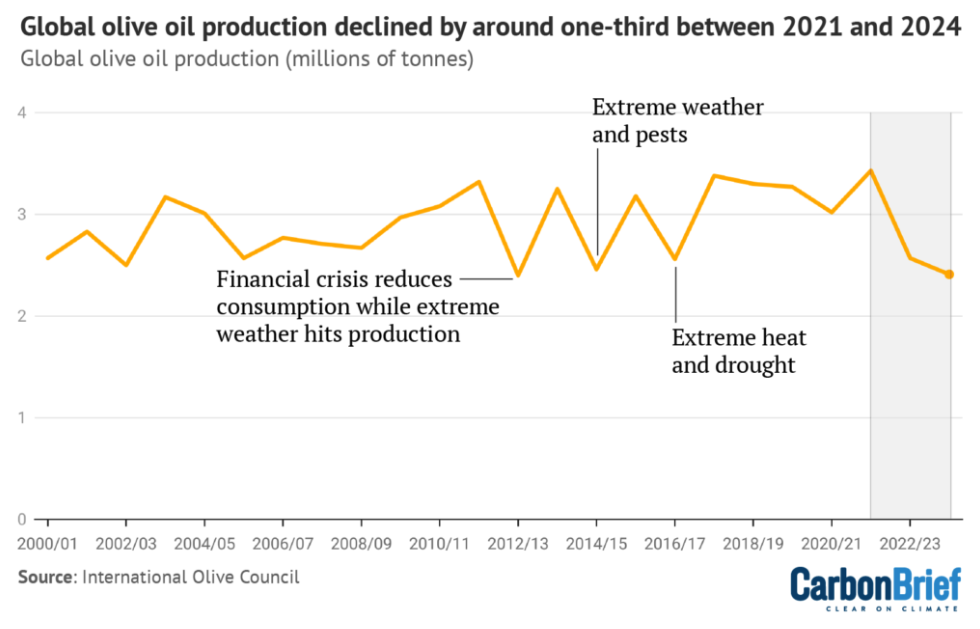
Cocoa was another commodity whose price has soared globally in the past couple of years. This was due to a number of factors, the study says, including extreme weather in Ghana and the Ivory Coast where more than 60% of the world’s cocoa is grown.
Many parts of the two west African countries experienced “unprecedented” temperatures of up to 50C in February 2024, following a “prolonged drought” in 2023.
The “dangerous”, humid February heat was made about 4C hotter due to climate change, according to analysis from the World Weather Attribution group.
The new study also looks at coffee price increases after extreme heat in Vietnam in 2024 and a 2023 drought in Brazil.
Kotz said the most notable examples of price rises were with commodities such as cocoa and coffee, which are available globally, but produced in concentrated areas – opening up the “possibility for greater volatility” in the event of weather extremes.
‘Knock-on’ effects
A 2024 study by Kotz and researchers at the European Central Bank found that high temperatures increased food inflation “persistently” for 12 months after the extremes in both high- and low-income countries.
Kotz says the new study is a “follow up” to this research. It discusses some of the other factors impacting the food prices in the study, such as high transport costs contributing to rising food prices in Ethiopia, as well as rising production costs and high tourist demand contributing to soaring rice prices in Japan.
The findings are a “stark reminder that climate change is already putting significant pressure on crop production globally”, says Dr Jasper Verschuur, an assistant professor of engineering and climate security at Delft University of Technology in the Netherlands.
Verschuur, who was not involved in the research, tells Carbon Brief:
“This study also stresses that the impacts of shocks to the agricultural sector can have cross-sectoral impacts – for instance, to health, political stability and monetary policy – which are rarely ever captured in modelling studies.”
He notes that while understanding of local impacts of extreme weather on crop yields and price has “improved”, the wider impacts and dual effects of climate and non-climate “shocks” are still less well-understood.
The researchers discuss some of the “knock-on societal risks” from rising food prices in the study, such as increasing economic inequality, malnutrition and an overall increase in inflation.
In a statement about the new research, Shona Goudie, the policy and advocacy manager at the Food Foundation, a UK charity whose executive director was involved in the study, says:
“Increasingly frequent price shocks due to climate change could see food insecurity and health inequalities deteriorate even further.”
The post Mapped: 16 times extreme weather drove higher food prices since 2022 appeared first on Carbon Brief.
Mapped: 16 times extreme weather drove higher food prices since 2022
Climate Change
Bolivia’s shift to the right renews ambition to mine vast lithium reserves
Bolivia’s election of centre-right President-elect Rodrigo Paz Pereira could see the country open its vast lithium resources to foreign investors to bolster its faltering economy – a move that could benefit the US after years of hostility toward Washington, analysts say.
Paz, a senator and the son of a former president, won the country’s election earlier this month, ending two decades of left-wing rule, which constrained foreign investment in the South American nation’s mineral wealth.
The change in government may be welcomed by investors in the US, which is seeking to secure access to minerals that are critical for clean technology and military equipment, to counter China’s supply chain dominance, and has previously raised concerns over Chinese investments in the region’s lithium industry.
Lithium is a key material to manufacture rechargeable batteries for electric vehicles and energy storage.
Bolivia makes up less than 1% of global lithium production despite possessing some of the world’s largest reserves, with an estimated 23 million tonnes, or 20% of the global total.
Paz has pledged to seek overseas partnerships to tap these reserves. But he will have to balance engaging the US with maintaining investment from China and Russia initiated by his predecessors.
“Exactly what he does on this issue will determine his relationship with China and Russia,” said Farit Rojas, a professor at the Higher University of San Andrés in La Paz.
At the same time, the political reset could provide Bolivia with a critical opportunity to set clearer and stricter environmental and social standards for developing its burgeoning lithium sector, analysts told Climate Home News.
Bolivia’s lithium dream
Paz’s election comes at a pivotal moment for the country. It is mired in an economic crisis spurred by runaway inflation caused by a foreign currency shortage, leaving people waiting in long lines for fuel and essentials like cooking oil.
Converting lithium reserves into a profitable export industry would bring much needed dollars into the country.
But doing so would require amending Bolivia’s constitution to allow private firms to extract the mineral. That privilege was restricted to Bolivia’s state-owned companies under the 20-year rule of the Movement for Socialism (MAS), the party formerly led by ex-President Evo Morales.
Constitutional restrictions and past rejection of foreign investment mean Bolivia’s lithium resources remain largely untapped compared to neighbouring Argentina and Chile, whose deposits are of higher quality.
A significant share of Bolivia’s deposits also lie beneath the Salar de Uyuni salt flats, a major tourist attraction.
Paz, whose party does not have a legislative majority, has yet to say whether and how he will amend Bolivia’s constitution. But he has pledged not to “sell out” Salar de Uyuni.
US, China and Russia: a balancing act
His first months in office will be watched closely by the Trump administration. Following Paz’s election victory, the US Department of State pledged to work with him on “shared goals of regional and global security, economic prosperity, and growth that will benefit our nations”.
For the US, this could be an opportunity to break China and Russia’s grip on Bolivia’s lithium reserves, said Pablo Hamilton, a Chilean mining lawyer connecting foreign investors with energy opportunities in Bolivia.
In 2024, Bolivia’s state-owned Yacimientos de Litio Bolivianos lithium company signed contracts worth a combined $2 billion with Chinese and Russian firms to extract lithium beneath the Salar de Uyuni salt flats. The year prior, it signed a $1.4 billion deal with Chinese battery manufacturing giant CATL to develop its lithium resources.
AI and satellite data help researchers map world’s transition minerals rush
But those contracts – which have yet to be approved by Bolivia’s legislature – have been sharply criticised by scientists, Indigenous peoples and local communities because of a lack of transparency over the consultation process, inconsistencies within the contracts and environmental risks. Paz has pledged to review the contracts.
Cancelling the contracts could cause investors to worry about policy volatility, Hamilton told Climate Home News. But the administration could justify doing so if it can prove allegations of corruption that have swirled around the deals. It could also provide an opportunity to establish stricter mining standards that provide certainty to potential investors.
Investors “don’t know what to expect”
“The rules are not clear enough. It’s very concerning that investors don’t know what to expect,” Hamilton said. “This is a great opportunity to [mandate] a free, prior and informed consultation process and environmental impact assessments – really professional ones, not just to tick the box.”
To attract foreign investment, Paz will likely seek to build public-private partnerships, which will require greater engagement from local actors than in the past, Hamilton said.
In the area surrounding Salar de Uyuni, Indigenous groups have lost trust in the government, citing the shadowy allocation of mining contracts and saying their communities have not benefited from mining.
They also worry that additional extraction would deplete the limited freshwater resources they rely on for farming, said Gonzalo Mondaca of environmental organisation Cedib, which works with communities living in the lithium-rich region.
Efforts to green lithium extraction face scrutiny over water use
The proposed Chinese and Russian extraction plans would use direct lithium extraction (DLE), a group of technologies that proponents say can help extract more lithium with fewer environmental impacts but which still uses large amounts of water.
But existing environmental assessments are not sufficient to understand the impact of the technique on the salt flat’s ecosystem, said Mondaca.
On the campaign trail, Paz also said he would seek to export the magnesium byproducts of lithium extraction to the US and China.
However, that plan requires a high level of technological development and Bolivia currently lacks the necessary infrastructure, said Mondaca.
Even if the new president manages to clear constitutional hurdles to liberalise the country’s lithium sector, “there is still a long way to go,” he added.
The post Bolivia’s shift to the right renews ambition to mine vast lithium reserves appeared first on Climate Home News.
Bolivia’s shift to the right renews ambition to mine vast lithium reserves
Climate Change
10 reasons why we need to act for the Amazon
The Amazon isn’t just the world’s greatest rainforest. She has been home to her original people for tens of thousands of years, who have persisted through centuries of colonial incursions to protect their home. At each moment of each day, the Amazon breathes, dances, and sings with an endless variety of plants and animals, many of those we humans have yet to understand. The Amazon is life-giving, irreplaceable and yet profoundly vulnerable.
Here are 10 fascinating facts to inspire you to take action for the Amazon:
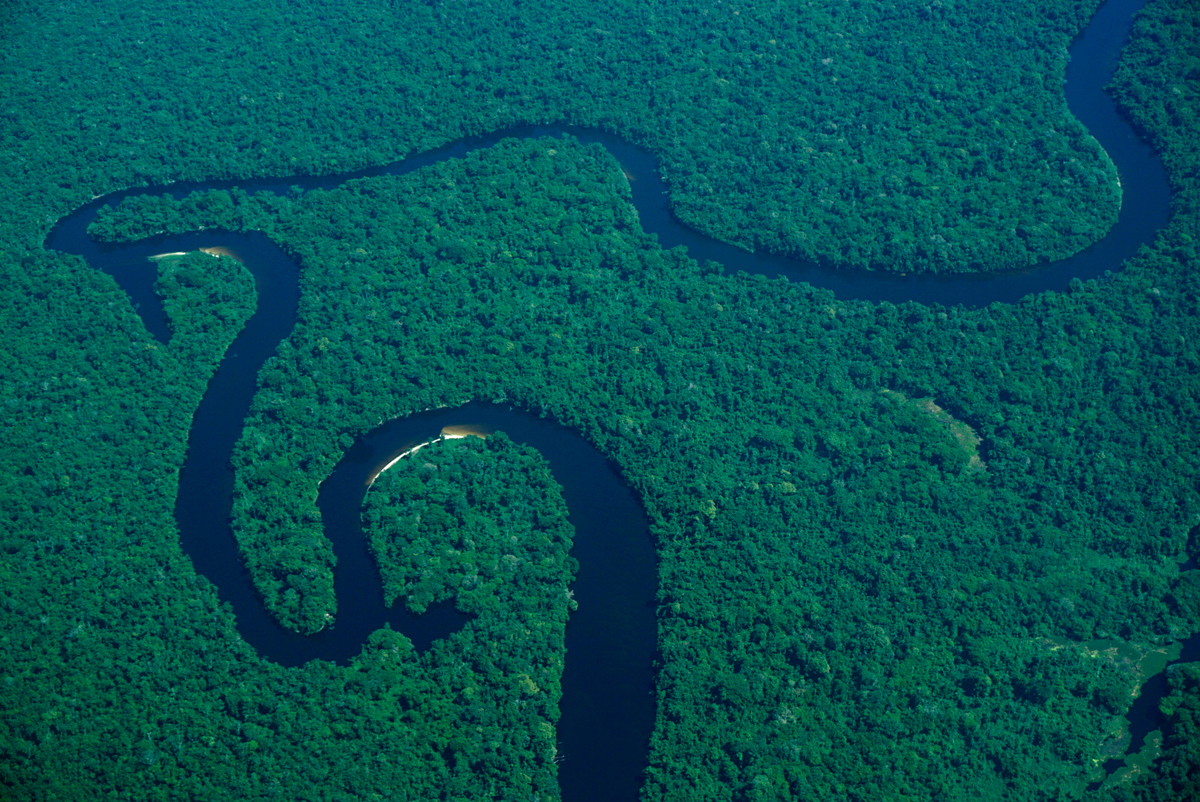
1- The Amazon is the largest rainforest in the world
Spanning over nine countries in South America, the Amazon is the largest tropical forest on the planet, covering 6.7 million square kilometres. To put it in perspective, she is twice the size of India—the largest country in South Asia. The biggest part, around 60%, is in Brazil. After the Amazon, the Congo Basin and Papua host the world’s largest remaining rainforests.
2- The Amazon is one of the most biodiverse ecosystems on Earth
The Amazon is home to approximately 10% of all known species of fauna and flora worldwide. From the beautiful hyacinth macaws to fearless jaguars and the amazing pink dolphins, this vibrant ecosystem is teeming with life. In some areas, a single hectare can contain more than 300 tree species, approximately two-thirds of the native tree species in Europe (454), making the Amazon one of the most botanically rich regions on Earth.
Studies show that the Amazon Basin harbours at least 2,716 species of fish, 427 amphibians, 371 reptiles, 1,300 birds, and 425 mammals. However, the vast majority of its biodiversity lies in her invertebrates, particularly insects, with over 2.5 million species currently known

3- There are approximately 3 million Indigenous People living in the Amazon
The Amazon is home to a diverse group of Indigenous Peoples. Over 390 Indigenous Peoples live in the region, along with approximately 137 isolated groups, who have chosen to remain uncontacted.
In Brazil, about 51.2% of the country’s Indigenous population resides in the Amazon. But the largest tropical forest in the world is also home to traditional communities that have lived in harmony with the forest for generations, such as Rubber Tappers, Ribeirinhos—who inhabit the Amazon’s riverbanks—and Quilombolas, Afro-Brazilian communities descended from enslaved people..
4- The Amazon is home to over 40 million people
The Amazon is not just a vast rainforest rich in biodiversity and home to Indigenous People—it is also home to several cities. In Brazil, These include Manaus , an industrial hub with a population of 2.2 million, and Belém , which will host the United Nations Climate Conference (COP30) in November 2025.
These people’s lives are intrinsically connected to the forest. They depend on her for their food, fresh water, and to regulate the local climate. Smoke from the fires in the Amazon directly impacts the people living in the region, darkening the skies and causing respiratory problems to the population, especially children and elders.
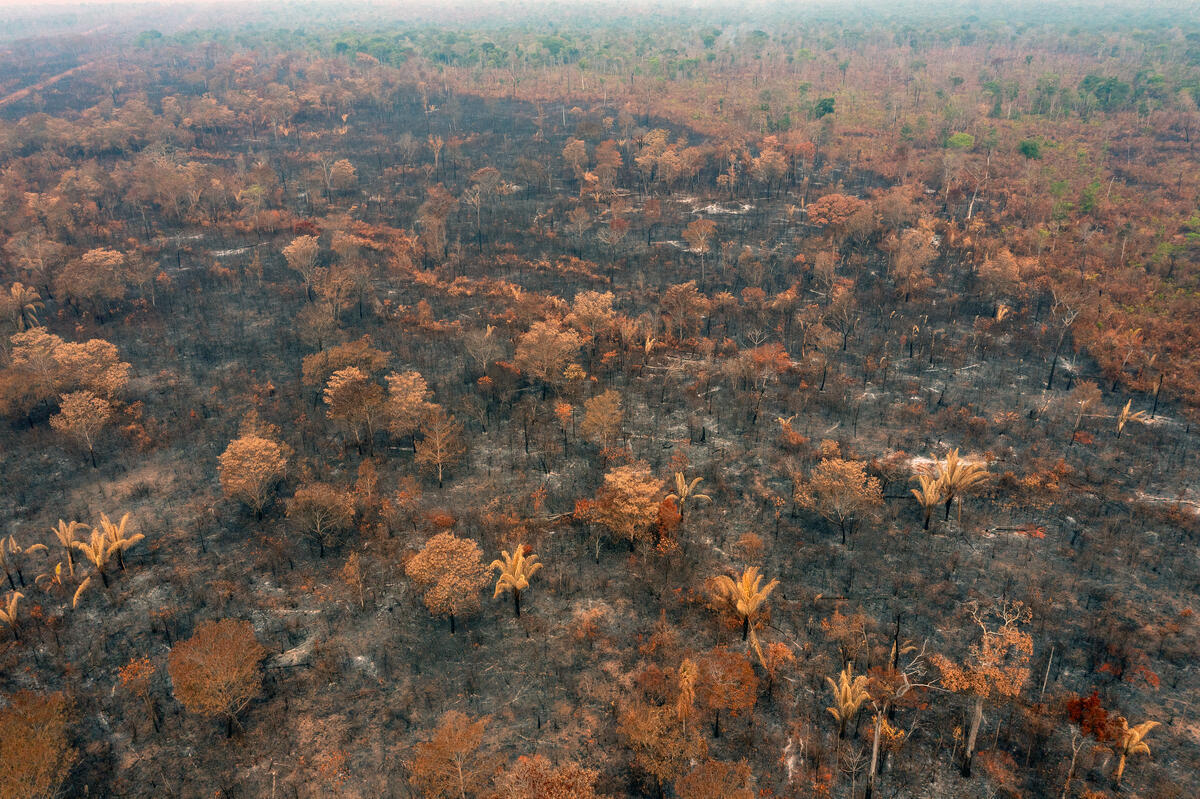
5- The Amazon is vital for the global climate
The Amazon is estimated to store about 123 billion tons of carbon, both above and below ground, making her one of Earth’s most crucial “carbon reserves”, vital in the fight against the climate crisis. However, studies show that fire- and deforestation-affected areas of the Amazon are now releasing more CO₂ into the atmosphere than they absorb. This poses a major threat to the global climate. Protecting the Amazon means protecting the future of everyone.
6- Fires in the Amazon are not natural
Unlike bushfires in Australia and other parts of the world, fires in the Amazon are not natural. In the Amazon biome, fire is used in the deforestation process to clear the land for agriculture and pasture. The use of fire in the Amazon is often illegal, and so is deforestation. This practice has a major impact on the local biodiversity, the health of the populations living in the region, and to the global climate, as the fires release vast amounts of carbon into the atmosphere.
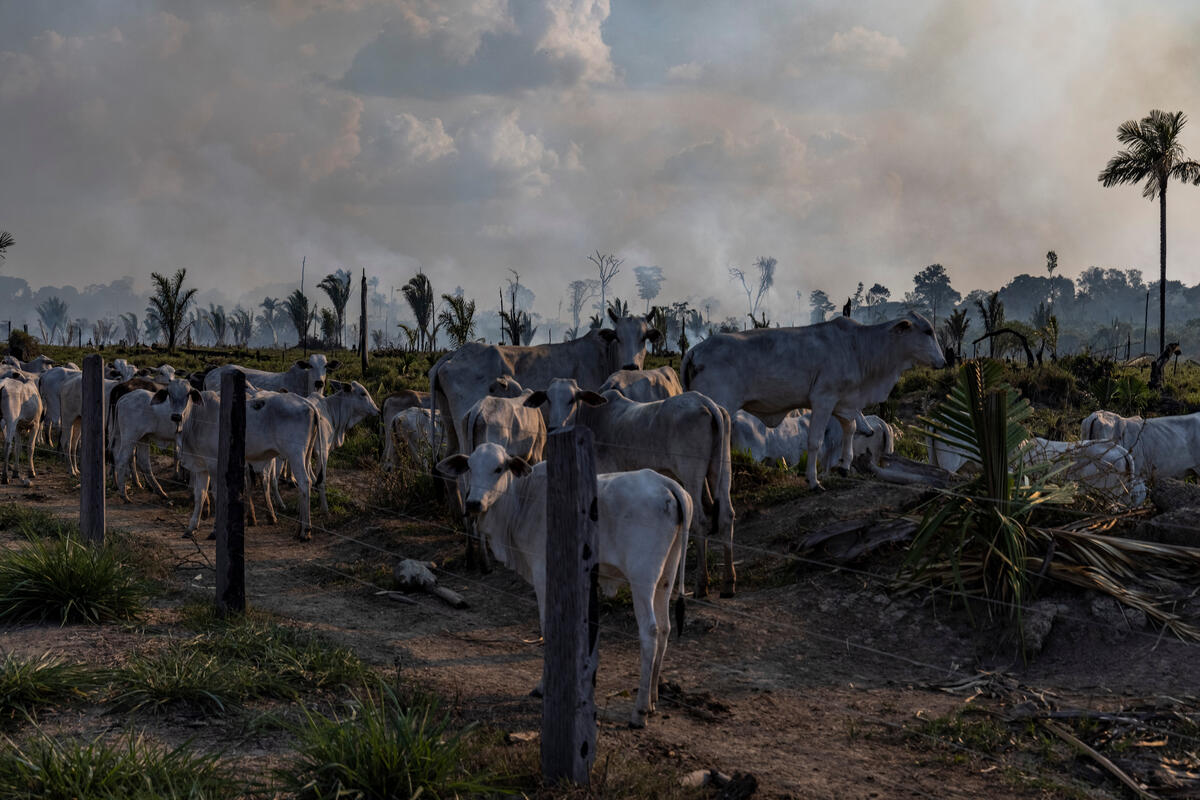
© Victor Moriyama / Amazônia em Chamas
7- Cattle ranching is the leading cause of deforestation in the Amazon
The expansion of agribusiness in the Amazon is putting more and more pressure on the forest. According to a study, 90% of the deforested areas in the Brazilian Amazon are turned into pasture to produce meat and dairy. This means the food we eat may be linked to deforestation in the Amazon. We must urge our governments to stop buying from forest destroyers and ensure supply chains are free from deforestation, and demand stronger protections for the Amazon.
8- Illegal gold mining is a major threat to Indigenous Peoples
Illegal gold mining in Indigenous Lands in Brazil surged by 265% in just five years, between 2018 and 2022. The activity poses a severe threat to the health and the lives of Indigenous People, destroying rivers, contaminating communities with mercury and bringing violence and death to their territories.
But illegal gold mining doesn’t impact just the forest and Indigenous People. A recent study showed that mercury-contaminated fish are being sold in markets in major Amazonian cities, putting the health of millions at risk.
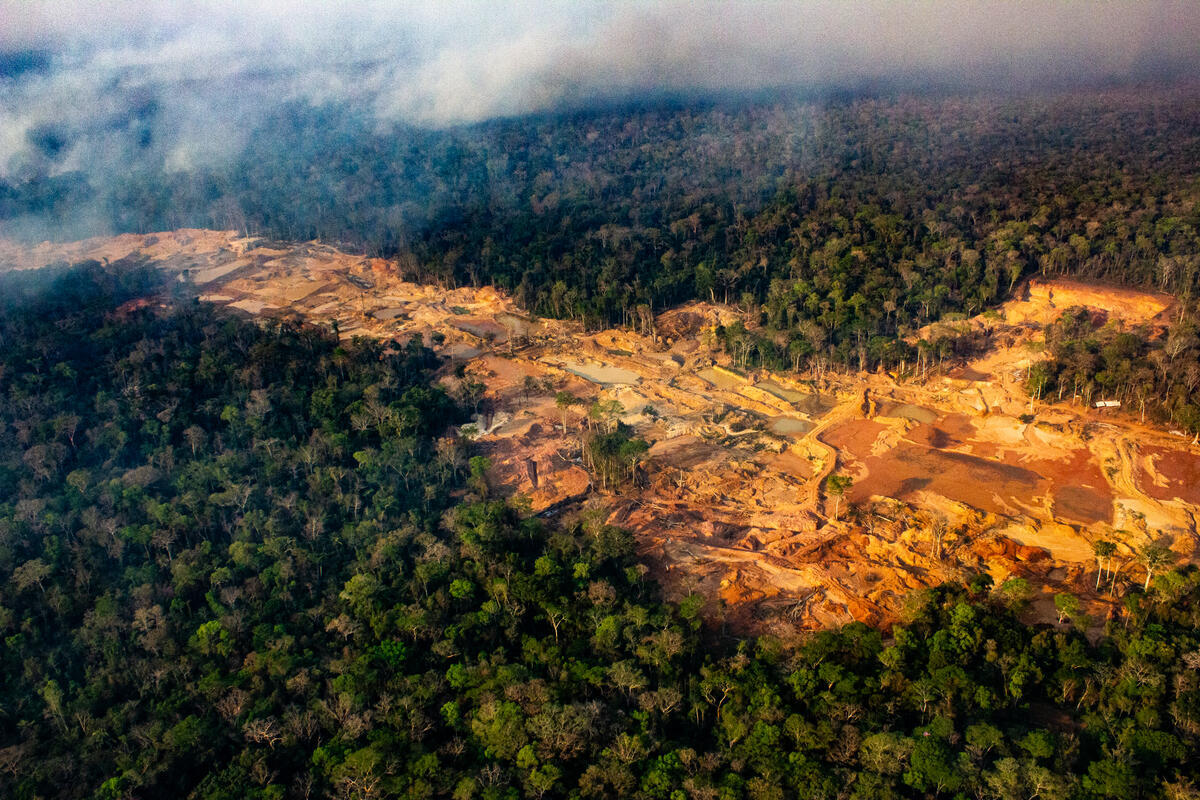
9- The Amazon is close to a point of no return
About 17% of the Amazon has already been deforested, and scientists warn we are getting dangerously close to a ‘point of no return’.
According to a study, if we lose between 20% and 25% of the Amazon, the forest might lose its ability to generate its own moisture, leading to reduced rainfall, higher temperatures, and a self-reinforcing cycle of drying and degradation.
As a result, vast areas of the forest could turn into a drier, savanna-like ecosystem, unable to sustain her rich biodiversity. This could have catastrophic consequences for the global climate, local communities, and the planet’s ecological balance.
10- The most important Climate Conference in the world is happening in the Amazon this year
COP30, the United Nations Climate Conference, will take place in Belém, the second largest city in the Amazon region, in November 2025. During the conference, representatives from countries all over the world will meet to discuss measures to protect the climate. Across the globe, we are already witnessing and feeling the impacts of the climate crisis. This is our chance to demand our political leaders move beyond words to urgent action. They must stop granting permission and public funds to Earth-destroying industries. Instead, our leaders must respect, pursue, and support real solutions that already exist—solutions that put the forest and her people at the heart of the response. Indigenous guardians of the forest hold true authority, and they must be respected and heard. The moment is now.
We are the turning point! Join the movement and demand respect for the Amazon.
Climate Change
As the Data Center Boom Ramps Up in the Rural Midwest, What Should Communities Expect?
The rapid development will change the Corn Belt in significant, unforeseen ways. Residents are just beginning to grapple with what that means.
TAZEWELL COUNTY, Ill.—To the untrained eye, Central Illinois is all lush fields of corn and green soybeans shortly before harvest. The wind shuffles through the row crops, and the air is warm and humid and full of insects. The horizon is dotted with power lines, strung together by wire, and the occasional water tower—the only objects that disrupt a vast sky.
As the Data Center Boom Ramps Up in the Rural Midwest, What Should Communities Expect?
-
Climate Change2 years ago
Spanish-language misinformation on renewable energy spreads online, report shows
-
Climate Change3 months ago
Guest post: Why China is still building new coal – and when it might stop
-
Climate Change Videos2 years ago
The toxic gas flares fuelling Nigeria’s climate change – BBC News
-

 Greenhouse Gases1 year ago
Greenhouse Gases1 year ago嘉宾来稿:满足中国增长的用电需求 光伏加储能“比新建煤电更实惠”
-
Greenhouse Gases3 months ago
Guest post: Why China is still building new coal – and when it might stop
-

 Climate Change1 year ago
Climate Change1 year ago嘉宾来稿:满足中国增长的用电需求 光伏加储能“比新建煤电更实惠”
-

 Carbon Footprint2 years ago
Carbon Footprint2 years agoUS SEC’s Climate Disclosure Rules Spur Renewed Interest in Carbon Credits
-
Renewable Energy4 months ago
US Grid Strain, Possible Allete Sale

